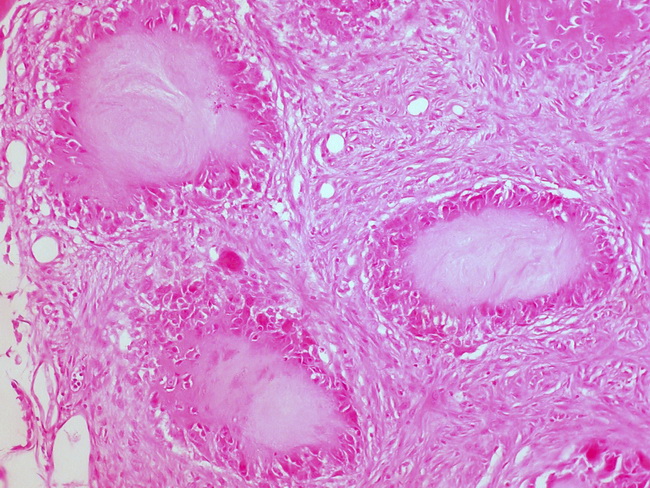Treatment of Chronic Gout


Comments:
To prevent renal complications of gout (uric acid nephrolithiasis, urate nephropathy) and formation of gouty tophi, the patients with chronic hyperuricemia are treated with drugs like allopurinol, febuxostat, and pegloticase. Allopurinol is a purine analog and competitively inhibits xanthine oxidase. This prevents conversion of xanthine and hypoxanthine (which are derived from nucleic acids) to uric acid thereby reducing serum urate levels. Xanthine and hypoxanthine are water-soluble and readily excreted in urine. Febuxostat is a non-purine inhibitor of xanthine oxidase. Pegloticase is a recombinant uricase and catalyzes oxidation of uric acid to allantoin, thereby lowering serum uric acid levels. Allantoin is water-soluble and is readily excreted. The image shows gouty tophi eroding sesamoid bone of foot. Image courtesy of: Ed Uthman, Houston, TX.


